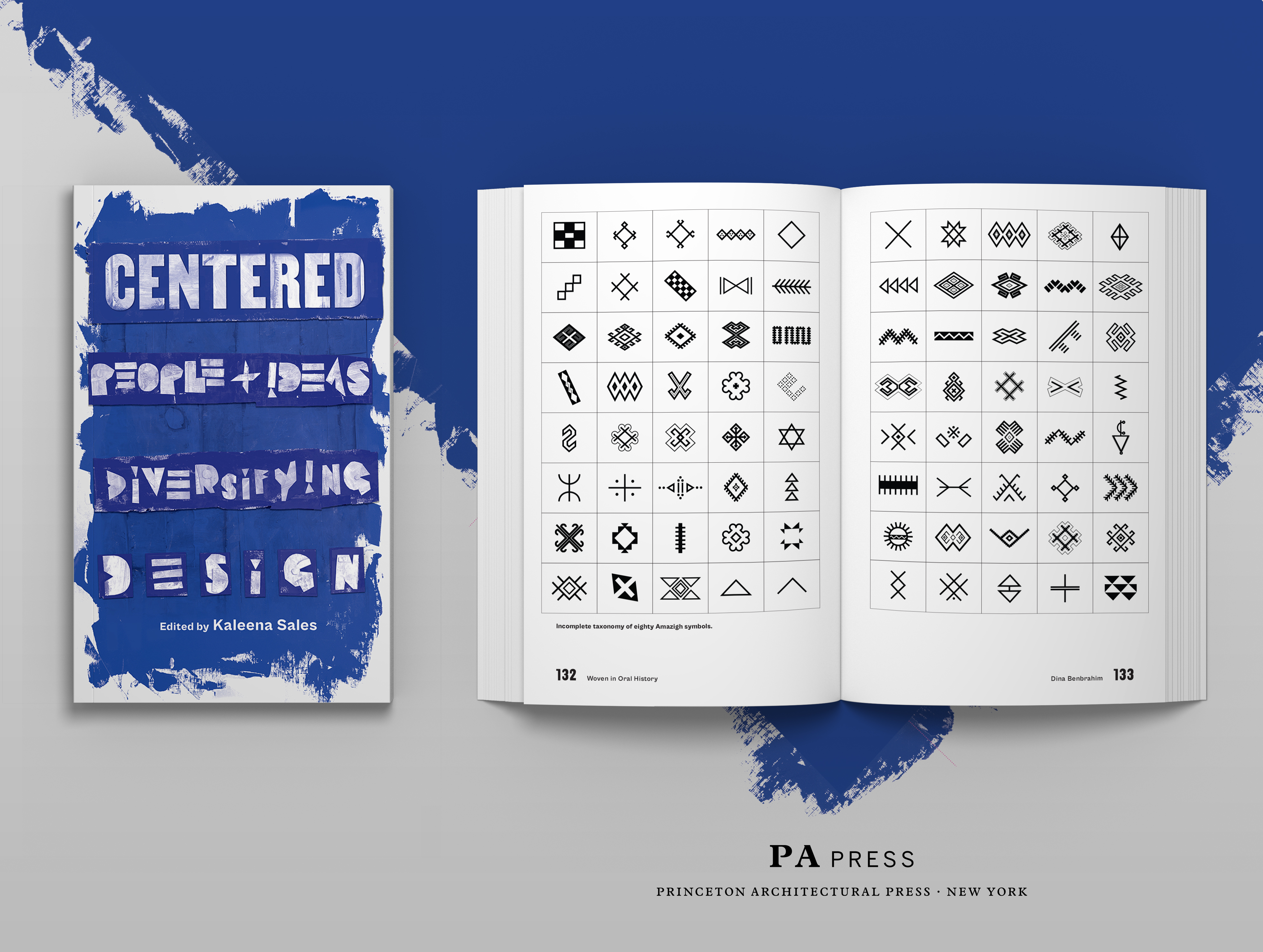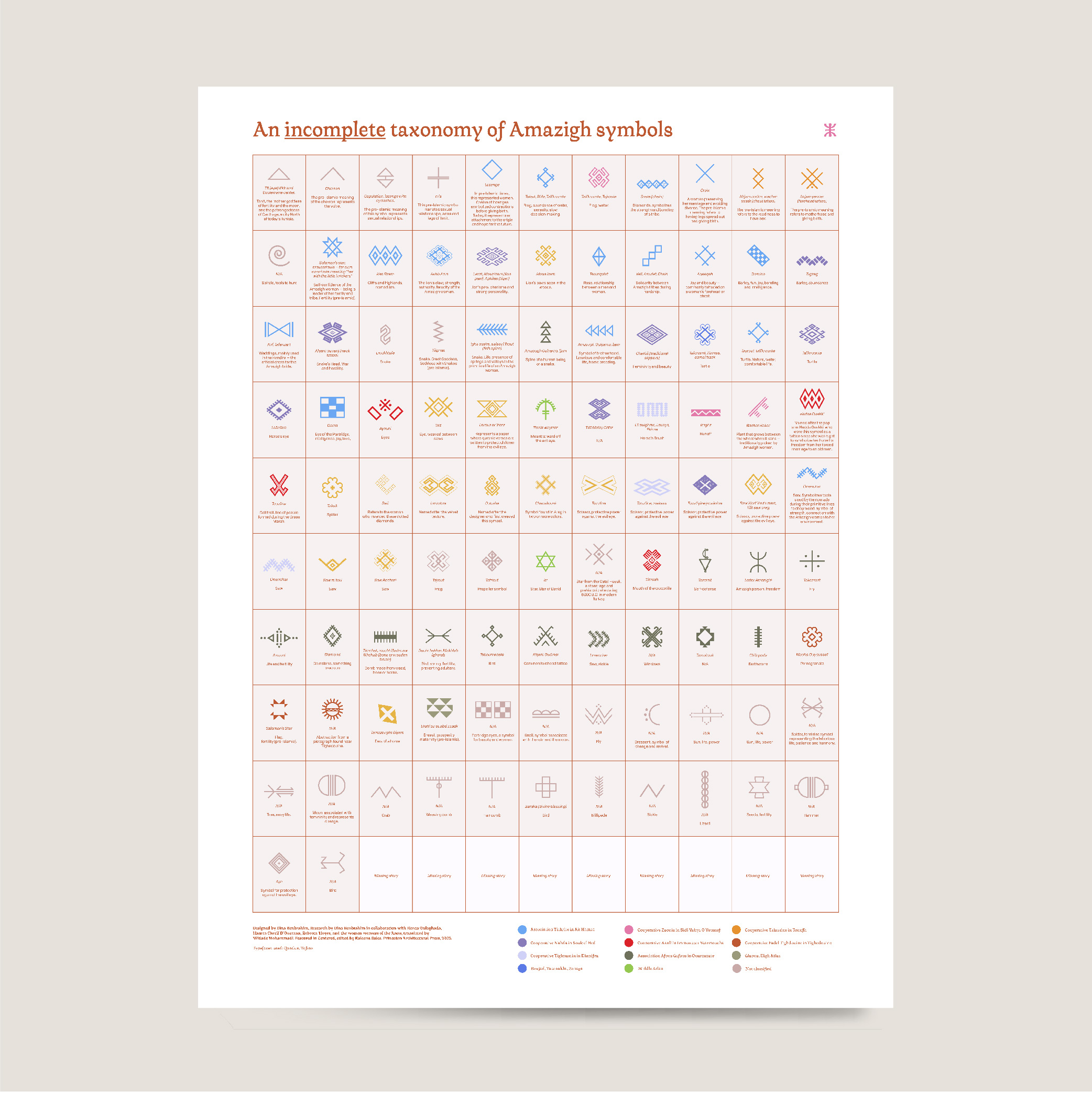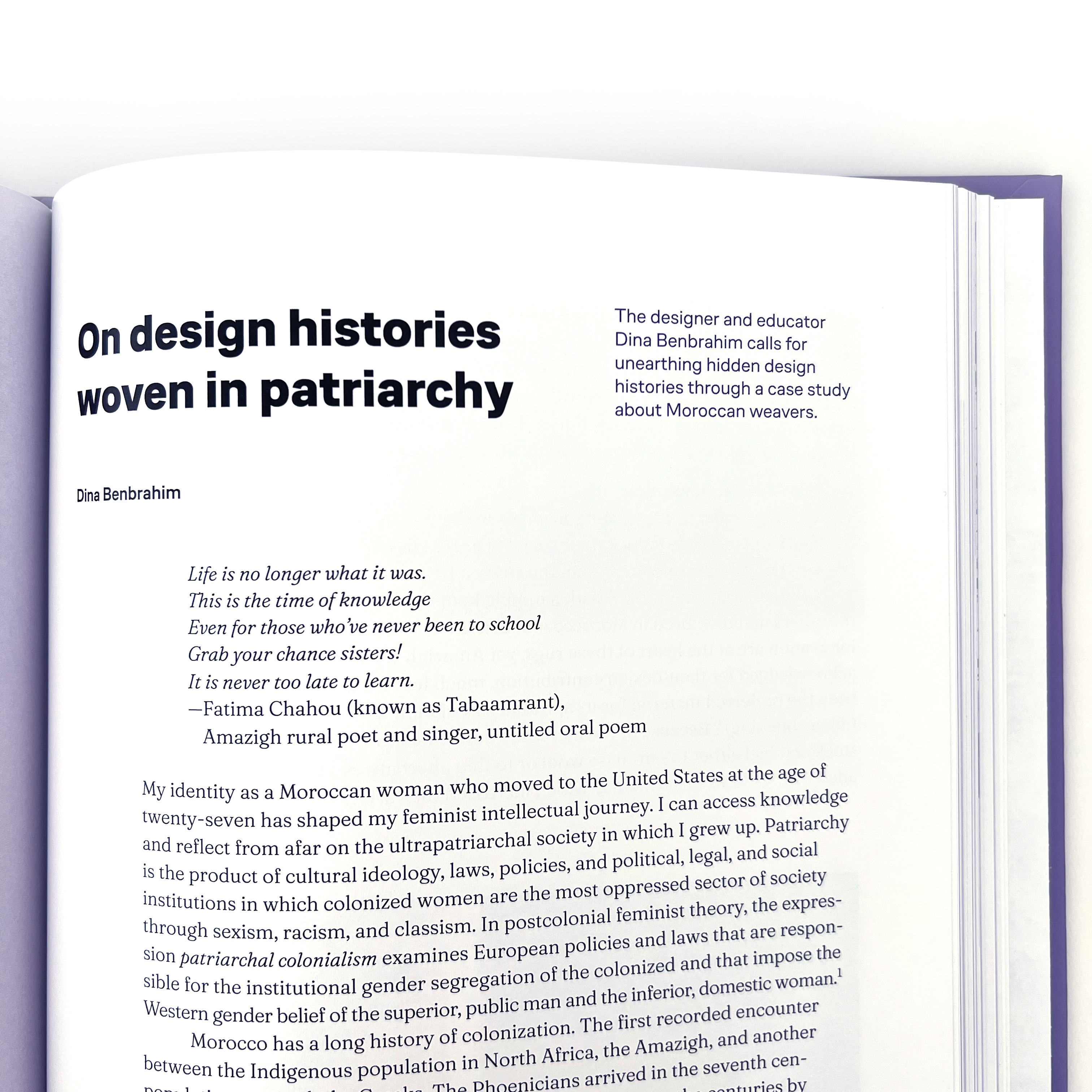AMAZIGH DESIGN
WRITING & TALKS
Ongoing research
Woven in Oral History: An Incomplete Taxonomy of Amazigh People

Centered gives a voice to the people, places, methods, ideas, and beliefs that have been eclipsed or excluded by dominant design movements, through thirteen essays and interviews.
My essay is titled Woven in Oral History: An Incomplete Taxonomy of Amazigh Symbols.
Filled with striking visuals from a range of global designers, Centered is a must-read and must-have for design practitioners, educators, students, and anyone interested in expanding narratives of design.
Cover designer: Adolphus Washington
︎︎︎ Pre-order here: smarturl.it/centered

This taxonomy of Amazigh symbols was distributed as a companion to the book, Centered, at the 2023 AIGA Design Conference. You can download it in high rez for free here ︎︎︎ https://kaleenasales.design/store/p2/AmazighSymbolsPoster.html#/
DHS Hidden Histories: Gender in Design

︎︎︎ Watch the talk:
https://www.youtube.com/watch?v=TvwXCrI_m3I
BIPOC Design History course

This lecture discusses feminist craft practices across Morocco and Kuwait—from aesthetic and functional value to political value. The visual language of Amazigh design in rugs is used as a feminist tool of collective memory, resistance, and innovation within an oppressive, colonial, and patriarchal context. Al Sadu weaving has been born and nurtured by traditional Bedouin women; the stories surrounding their symbols, origins, and methods will be shared across time.
︎︎︎ Watch the talk: https://bipocdesignhistory.com/products/woven-in-feminism-amazigh-al-sadu-symbols/
On Design Histories Woven in Patriarchy

My essay On Design Histories Woven in Patriarchy has been published in the book Feminist Designer edited by Alison Place.
Feminist Designer brings together a constellation of voices and perspectives to examine the intersection of design and feminist theory.
︎︎︎ Pre-order here: https://mitpress.mit.edu/9780262048422/feminist-designer/
Form Follows Appropriation
 This visual essay was exhibited at the 2023 AIGA Design Conference.
This visual essay was exhibited at the 2023 AIGA Design Conference.